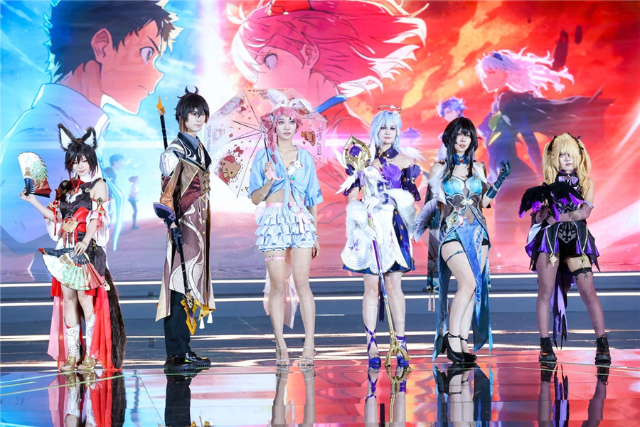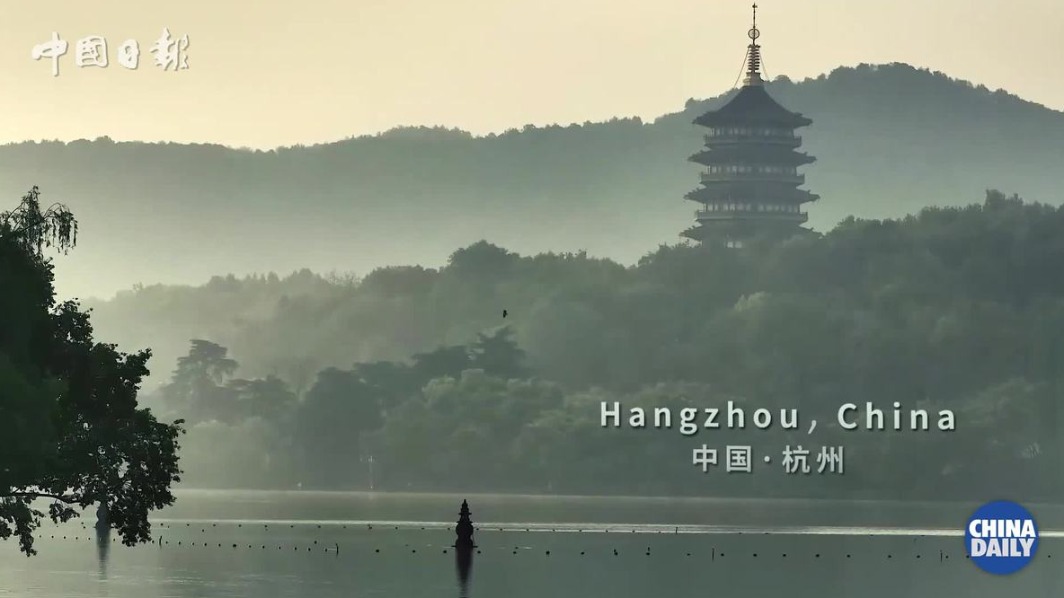old art form for new audience
romantic drama comes to life in a visually stunning film showcasing cantonese opera, xu fan reports.
two beautiful women in white and green dresses walk across an arched stone bridge over a pond, where colorful carp swim under lotus leaves. the scene, which looks like a chinese ink painting, opens white snake, the mainland's first cantonese opera film shot with the techniques of 4k, surround sound and high definition.
based on the legend of white snake, one of china's most renowned folklore romances, the film retells the love story between a white snake spirit and a handsome young man.
originating from a myth in the tang dynasty (618-907), the legend of white snake was reshaped as a tragic romance in ming dynasty (1368-1644) writer feng menglong's collection jingshi tongyan (stories to caution the world), spawning various remakes, ranging from novels to operas and tv series later.
keeping the main plotline of the original tale, the film follows two snake spirits-shape-shifted to the two beautiful women from the opening scene, named bai suzhen and xiaoqing-stumbling upon a young man, named xu xian, who had rescued a white snake hundreds of years ago in his previous incarnation.
the film is set in the picturesque city of hangzhou in east china's zhejiang province. the white snake spirit and the man fall in love and get married but soon face their top "enemy", monk fahai, who believes a spirit should not marry a human and forces them to split.
thanks to word-of-mouth reviews, exemplified by its score of up to 8.2 points out of 10 on the popular review site douban, the movie has become one of the most critically acclaimed films this year, drawing a number of young viewers, since its release on may 20.
for director zhang xianfeng, the splash has fulfilled his wish to help cantonese opera, a traditional art form dating to the southern song dynasty (1127-1279), to reach a wider and younger audience.
in 2018, zhang was invited by the guangdong-based zhujiang film group and guangdong cantonese opera theater to helm the project. the opera piece had been staged as a repertoire at the theater for four years.
"we discussed a lot to seek a breakthrough. we all believed it should be produced as a real film rather than as a documentary-like feature merely recording a classic art form performed by established artists," says zhang.
the cast includes well-known cantonese opera performer zeng xiaomin, a winner of the plum performance award, one of the country's top awards for theater and opera artists.
the film was shot for more than one month in late 2018, but took one and a half years to tailor nearly 1,300 special-effect shots by three studios in australia, new zealand and shenzhen in south china's guangdong province.
"some of the foreign visual-effects artists previously worked for peter jackson's the lord of the rings franchise. despite the digital technique being from the west, the aesthetic system to lay the foundation for this film is from the east," says zhang, who is a graduate of the central academy of fine arts in beijing.
as an example, one of the most classical scenes in the film features the two snake spirits conjuring a flood to destroy monk fahai's jinshan temple, as a deterrence meant to force the monk to release the seized man.
around 20 female performers simultaneously shake their long sleeves, symbolizing strong winds and big waves to stir the audience's imagination about the disaster, says zhang.
in an attempt to give the audience a realistic sense, as well as shooting the scene with an eastern aesthetic flavor, zhang recalls he sought inspiration from japanese artist katsushika hokusai's masterpiece, the great wave off kanagawa, to guide the foreign visual-effects artists.
symbolic significance, a key element of chinese traditional art forms, is also kept in the film.
"in a scene about the two protagonists' wedding night, they toast drinks in a chamber with a circular window, with a full moon shining behind. the circles symbolize an auspicious beginning of their marriage," explains zhang.
the character arcs-usually a small part in such traditional art forms-are developed in the film to make the centuries-old story resonate with modern audiences.
"in the ancient legend or traditional operas, the characters' personalities are comparatively simple and flat. villains are always evil while heroes are always noble. but it is not appealing enough to youngsters today," says the director.
so, in the film, human interest angles are employed to characters, such as monk fahai and two celestial guards of a magic plant that possesses the power to bring deceased people back to life. they are all traditionally depicted as ruthless antagonists.
zhang says the film marks his first experiment to blend the two different art forms of cinema and cantonese opera. he says he's also surprised by the film's rave reviews.
however, even with the praise online, many people are complaining it is difficult to find screenings in theaters.
the film has struggled to get more screenings in theaters which are dominated by commercial blockbusters. nonetheless, it still grossed around 13.6 million yuan ($2.13 million) at the box office as of wednesday.
contact the writer at xufan@chinadaily.com.cn
-
'nice' to meet you, hangzhou
may 6, 2024

